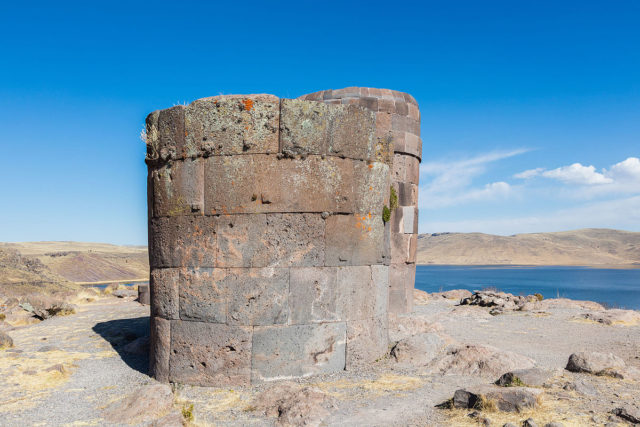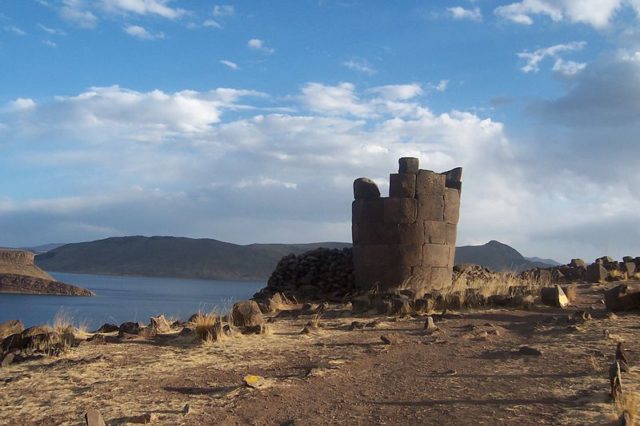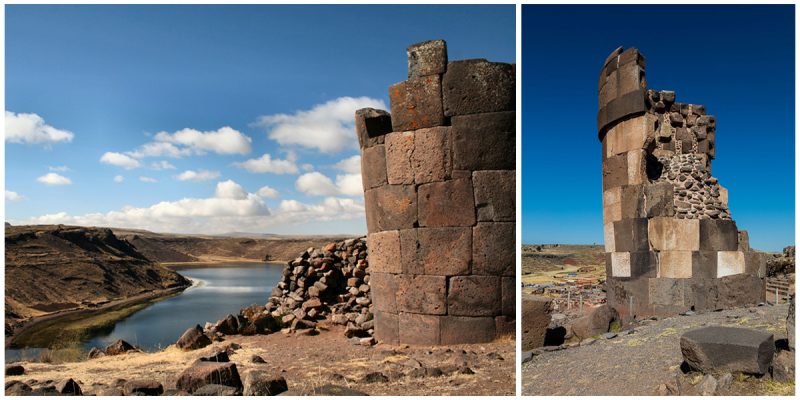The archaeological site known as Sillustani is a pre-Incan burial ground that consists of a group of huge cylindrical tombs, constructed out of stone and clay and between two and twelve meters in height, which stand around the shore of Peru’s Lake Titicaca.
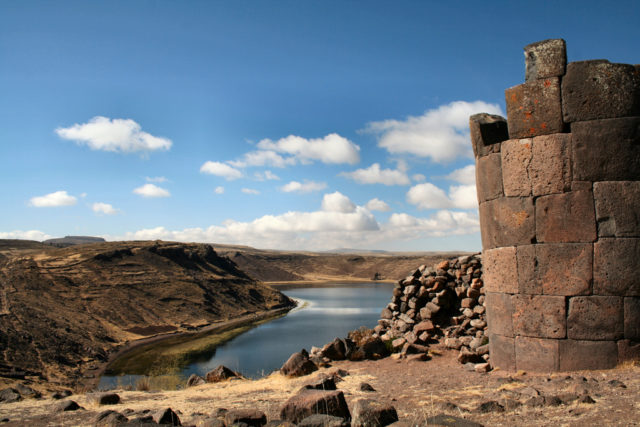
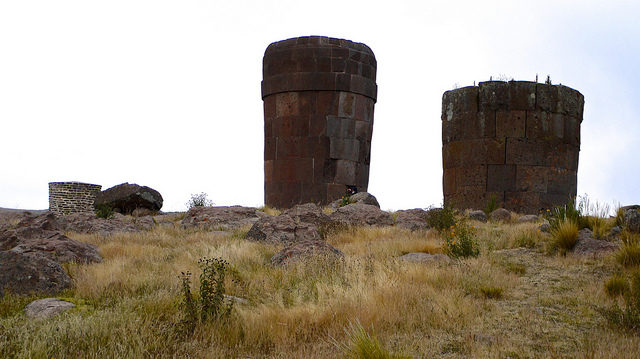
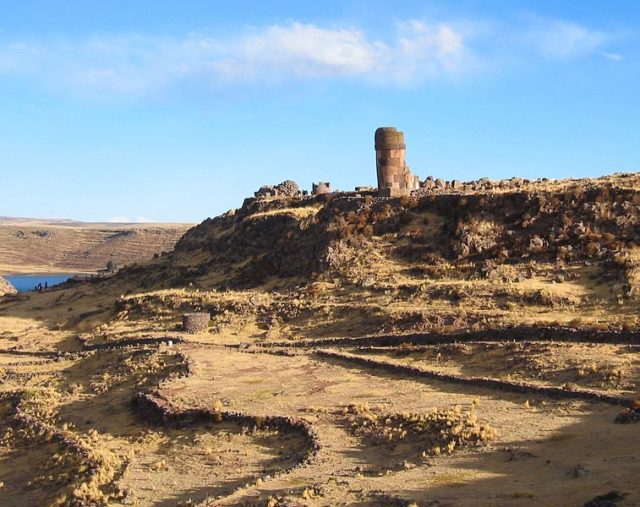
The tombs, built out of large stacked blocks above ground in tower-like structures called chullpas, are the vestiges of the Colla people, also known as the Aymara, who were conquered by the Inca in the 15th century.
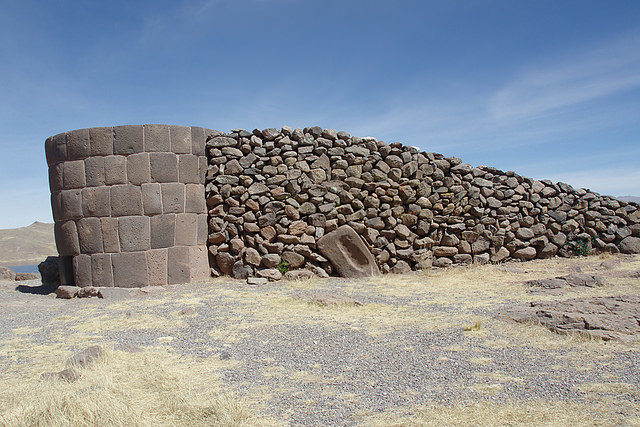
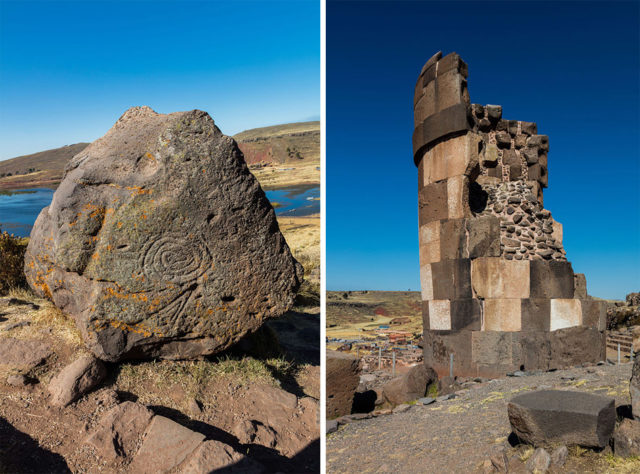
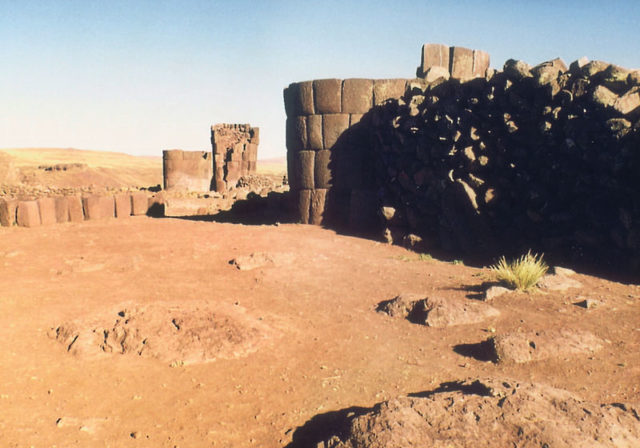
The word “chulpas” was used in the 19th century and comes from the Dictionary of Ludovico Bertonio (1612). Bertonio referred to the basket burials of the semi-nomadic pastoralists as “chulpas” and actually referred to stone towers as “uta Amaya” or “houses of the soul”. However, the term “chullpa” remains used today for the towers.
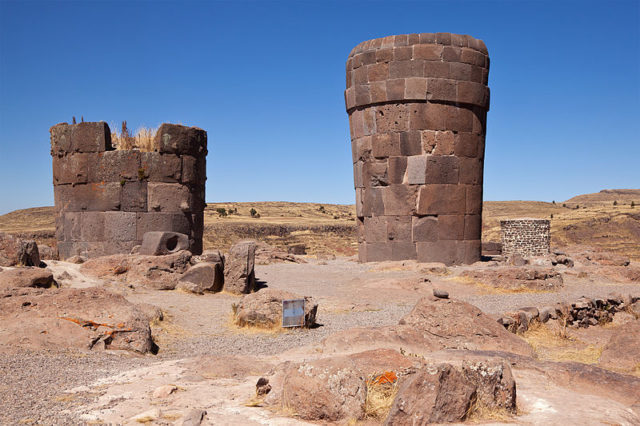
Ancestor worship and kinship were integral parts of Aymara culture, and the towers of Sillustani are the most impressive of the burial towers constructed by the Colla people. Each tower was built to hold an extended (usually noble) family of the Aymara elite within its rounded walls.
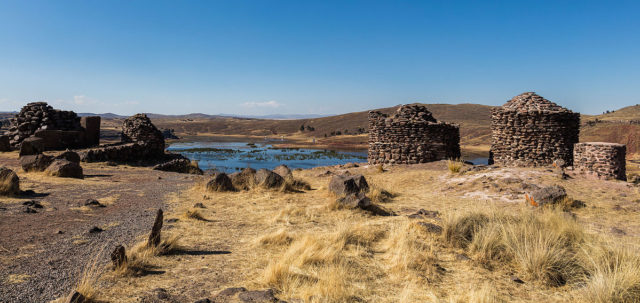
Corpses were not intentionally mummified, but in the dry environment created by the closed tomb, they survived for centuries. Most mummy bundles indicate burial in a fetal position. Some of the tombs also have various animal shapes carved into the stone. The only openings to the buildings face east, where it was believed the Sun was reborn by Mother Earth each day.
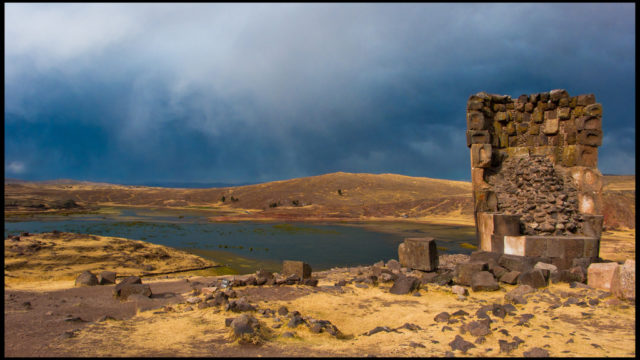
The architecture of the site is often considered more complex than typical Incan architecture. They are distinctive because the Colla used brick-like rectangular edges, in contrast with the Inca who used stones of varying shapes. Many of the blocks in the towers still bear the crude animal symbols that were added to the towers centuries ago.
